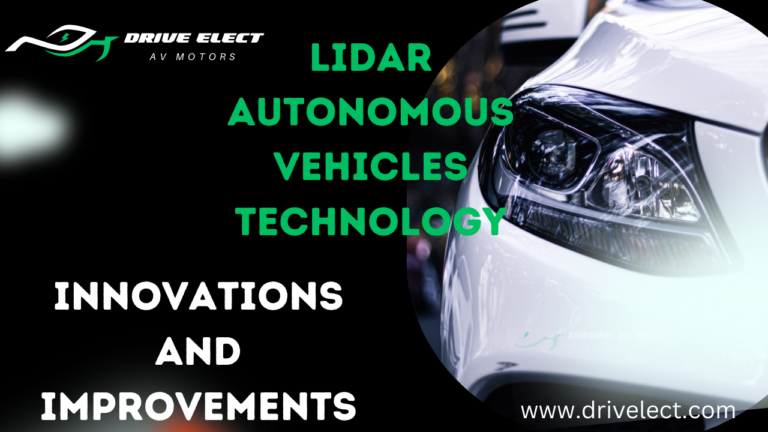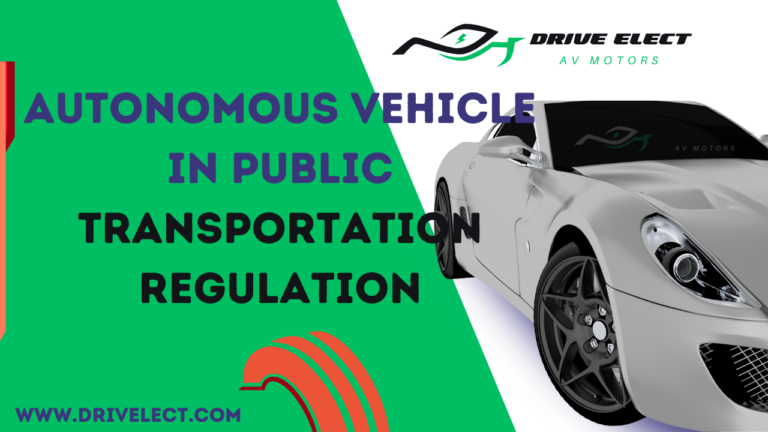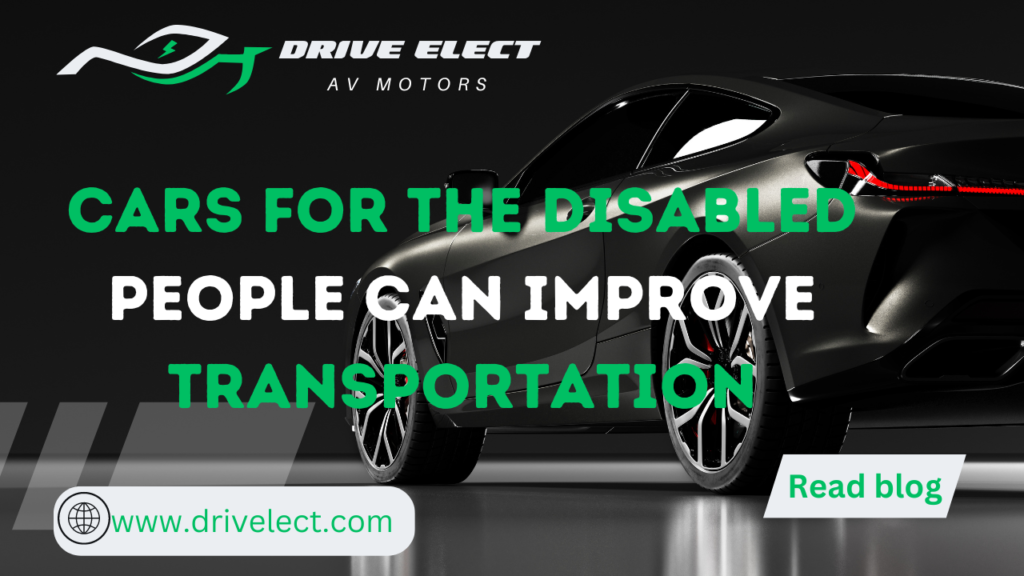In the integration of autonomous vehicles See cars that can drive themselves. This technology is a big deal and is changing many industries. Emergency services, like ambulances and fire trucks, can significantly benefit from AVs. It can make their work faster, safer, and more efficient. It can respond to emergencies fast. They don’t need a human driver, so they can get to the scene more quickly.
In integration of autonomous vehicles Using autonomous technology makes emergency services safer. Cars can avoid accidents better because they have intelligent systems to prevent crashes. Self-driving cars can plan the best route to an emergency. This means they waste less time, use less fuel, and can help more people. This technology can indeed change how emergency services work. It’s a big chance to make things better and more advanced.
Engineers who make sure these self-driving systems are safe play a crucial role after the integration of autonomous vehicles. They’re like technology’s protectors, ensuring sure it works properly and does not cause harm. This is a significant change, like a shift in how we think about and do things. Self-driving cars could completely transform how emergency services operate.
Table of Contents
ToggleIntegration of autonomous vehicles with emergency response systems
Swift response time:
When there is an emergency, time is super important. Getting help fast can save lives. Visualize cars that can drive on their own. This technology makes emergency services quicker and more efficient. AVs use intelligent computer programs and live information to move around well, even in busy traffic. These cars plan the best route in real-time, avoiding traffic jams. This means emergency vehicles can get where they’re needed faster.
For example, ambulances with this tech can quickly go around traffic, reaching people in trouble much quicker. This helps save lives. Using autonomous vehicle tech could save a lot of money, around $447 billion, on emergency services and vehicles by the year 2050.
The American Heart Association found that every minute counts during a heart emergency. We can respond much faster with self-driving tech, improving the chances of saving lives. Having cars that can drive themselves can make a massive difference in emergencies. That’s like having super-fast, intelligent vehicles that can help people when needed.
Enhanced safety in challenging environments:
Keeping everyone safe during emergencies is essential, and self-driving technology steps up to the challenge. Compared to human drivers, these smart cars do not get tired, confused, or make mistakes. They stay focused and exact even in challenging situations, making them a reliable choice for emergency services integration of autonomous vehicles.
This reliability is not just for the people in need but also for those responding to emergencies. Emergency responders and everyone on the road can feel safer with self-driving cars.
These self-driving cars come with top-score safety features. Things like systems that help avoid crashes and emergency brakes that boost in when needed. These features are like extra protection, ensuring things stay safe even when things get powerful during emergencies.
It is a potent mix of brilliant technology and human creativity working together to put safety first. It is all about making an environment where everyone involved can count on being as safe as possible, whether the people responding to emergencies or the people on the road.
Safety engineering in AVs:
Safety engineering involves designing fail-safe devices and termination in autonomous systems to ensure reliability and robustness. This is the backbone of the integration. Autonomous vehicles operate safely during emergency responses, preventing system failures and improving public safety.
Transformative impact on emergency response:
The combination of these elements can potentially transform how emergency services operate. Faster, safer, and more efficient responses can lead to improved emergency outcomes, ultimately reshaping the landscape of emergency response systems.
Uses cases:
In Helsinki, Finland, they started using special ambulances that can drive themselves. These ambulances have intelligent technology that helps them find the quickest way to get to someone needing medical help. With these self-driving ambulances, the time it takes to reach people in emergencies is 30% faster than regular ambulances. This means that medical help arrives sooner, which is essential.
In the United States, they are trying out something similar but with flying machines called drones. These drones are like tiny helicopters, and they can carry medical supplies and defibrillators. They are being tested to respond quickly to emergencies in places far away or hard to reach. These flying drones can get to people faster than ambulances that have to drive on the ground. So, they bring crucial medical stuff to people who urgently need it.
Both of these ideas, self-driving ambulances in Helsinki and medical drones in the United States, are all about ensuring that when there is a medical emergency, the right help gets there as fast as possible to save lives.
Projects:
The DARPA Urban Challenge was like a big test for cars that can drive themselves. It was planned by DARPA, which is an elegant name for the Defense Advanced Research Projects Agency. In this challenge, cars had to show how well they could move around busy city areas without a human driver. The vehicles successfully went through difficult city places, proving they can be helpful in emergencies.
Now, over in Europe, there is this project called “Automate” by the European Union. It’s like a team effort to make self-driving cars specifically for emergency services. You know, like police cars, fire trucks, and ambulances. The goal is to make these cars super bright to get to emergencies faster, be safer, and use resources in the best way possible. They want to use the power of self-driving technology to improve our emergency services.
DARPA showed that AVs may lead to emergencies. The Automate project in Europe is working hard to make sure our emergency vehicles become even more awesome with the help of autonomous driving technology—these are like bringing futuristic tech to save the day.
The pivotal role of safety engineering:
In the fast-paced world of self-driving cars, safety engineering takes center stage. They play a vital role in ensuring the reliability and strength of autonomous vehicles, especially in emergencies. The goal is to keep everyone safe on the roads.
Safety engineering is like the guardian angel of autonomous driving. Control the design, development, and deployment of these high-tech vehicles. A teamwork effort involving vehicle makers, software experts, system architects, and rule-making bodies. Together, they set strict safety values and guidelines to ensure these autonomous vehicles are as safe as possible.
One key superhero move of safety engineering is creating fail-safe mechanisms. A safety net that catches the system if something unexpected happens. Engineers work hard to build firing and fault tolerance into autonomous vehicles. They use fancy tech like sensor fusion, real-time monitoring, and clever algorithms to make these cars handle surprises and system glitches.
But safety doesn’t stop there. This is an ongoing mission. Engineers watch for autonomous vehicles throughout their lives, testing them in different situations to ensure they’re safe and secure. They analyze data from sensors, vehicle movements, and the environment to spot any safety weak points and make improvements.
In emergencies, safety engineering becomes a hero in communication and coordination. It helps autonomous vehicles, emergency services, and other responders talk to each other. This teamwork ensures a smooth and efficient response to emergencies where information flows seamlessly between the cars and everyone involved.
In easy words, safety engineering is the silent hero, making sure self-driving cars are not just cool gadgets but reliable and safe companions on the road, especially when things get tough.
Optimized efficiency and resource allocation:
Suppose your car could drive itself and help emergency services save lives faster and more efficiently. That’s the magic of autonomous driving technology. This is not just about cool self-driving cars but about making emergency responses quicker and more intelligent in the integration of autonomous vehicles.
These smart cars use intelligent moving to deliver vital medical supplies swiftly to emergencies. AVs speed up lifesaving equipment delivery, cutting down the time it takes for help to arrive. It’s like having a superhero delivery service on the road.
But that is not just about speed about the integration of autonomous vehicles. These cars are like mobile information hubs. They collect and send real-time data to emergency services. So, when there’s an accident, they can quickly know where it happened. The condition of the people involved and what resources are available. It’s like having a crystal ball that helps emergency teams make better decisions.
The impact of this technology on emergency services is vast. It’s a game-changer with faster responses, safer operations under challenging situations, and super-efficient of resources. Thanks to the genius of safety engineering, which ensures these self-driving vehicles are super reliable, the future of emergency services looks brighter.
As this technology grows, it’s not just about convenience or cool gadgets. It’s about saving lives, lowering the risks of accidents, and transforming how emergencies are handled. integration of autonomous vehicles Safety engineering is the unsung hero, making sure self-driving cars are not just a trend but a lifesaving tool, paving the way for a safer and more efficient future for emergency services.









